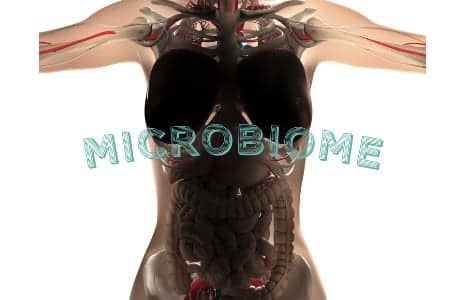The microorganisms living in the intestines could help with muscle growth and function, opening new doors to interventions for age-related skeletal muscle loss, an international research team led by Nanyang Technological University, Singapore (NTU Singapore) suggests.
Through a series of strength and movement-related exercises conducted on mice, the team comprising researchers from Singapore, Sweden, Switzerland, France, UK, US, and Australia found that mice with gut microbes had stronger skeletal muscles that can produce more energy when compared to mice without any gut microbes, known as germ-free mice.
The findings point to a new potential method for tackling age-related skeletal muscle loss by altering the gut microbe composition.
The study, published recently in Science Translational Medicine, could also pave the way for important studies relevant to muscle development, growth and formation of functional nerve-muscle communication, a media release from Nanyang Technological University explains.
“These results further strengthen the growing evidence of gut microbes acting as crucial gatekeepers to human health, and provide new insight into muscle mass maintenance with respect to ageing,” Professor Sven Pettersson from the NTU Lee Kong Chian School of Medicine, who led the study, says in the release.
“Given that healthy ageing is one of the main healthcare goals of Singapore’s ageing population, these results are encouraging. They lay the foundation for future studies that evaluate how microbes and their metabolites may be potential targets of intervention to improve skeletal muscle strength in the elderly, especially in countries such as Singapore with rapidly ageing populations.”
The study also shed light on the possible link between gut microbes and communication between nerves and muscles.
The researchers found that germ-free mice had reduced levels of key proteins essential for the assembly and function of a neuromuscular junction — a chemical structure that allows a motor nerve cell to communicate with a skeletal muscle fiber. These junctions allow signals to be transmitted to the muscle fiber, causing muscle contraction.
Transplanting gut microbes into germ-free mice partially restored the expression of these key proteins to the level observed in mice with gut bacteria.
“While additional experiments are needed to fully obtain the mechanisms underlying muscle atrophy and dysfunction in the nerve-muscle junction in germ-free mice, the results presented here allow for important and interesting future studies relevant to muscle development, growth and formation of functional nerve-muscle communication,” Pettersson adds.
To study the impact of gut microbes on skeletal muscle mass and muscle atrophy, which is the wasting or loss of muscle tissue, Pettersson and his team conducted three sets of exercise tests on both mice with gut microbes and germ-free mice with no trace of microbes in them.
In the weights test, each mouse was made to grasp a 26g weight to see if it could hold the weight for three seconds. Those who did so successfully then progressed to the next five weights, ranging from 33g to 100g.
The researchers also monitored the mice’s movements for an hour in an open environment to measure the total distance they covered and the amount of time the mice spent standing on their hind legs.
The mice also ran on a treadmill set at a gradually increasing speed from 0 to 15 meters per minute, and then maintained at a constant speed.
Upon examination, the research team found that on top of reduced skeletal muscle mass and increased expression of genes linked to muscle atrophy, the skeletal muscles in germ-free mice also displayed problems with function and the generation of new mitochondria, whose role is to break down nutrients to form energy for cellular activity.
But when the researchers transplanted gut microbes from mice to germ-free mice, they found that these mice had their muscle growth and function partially restored, and showed reduced signs of muscle atrophy, the release continues.
[Source(s): Nanyang Technological University, Science Daily]





